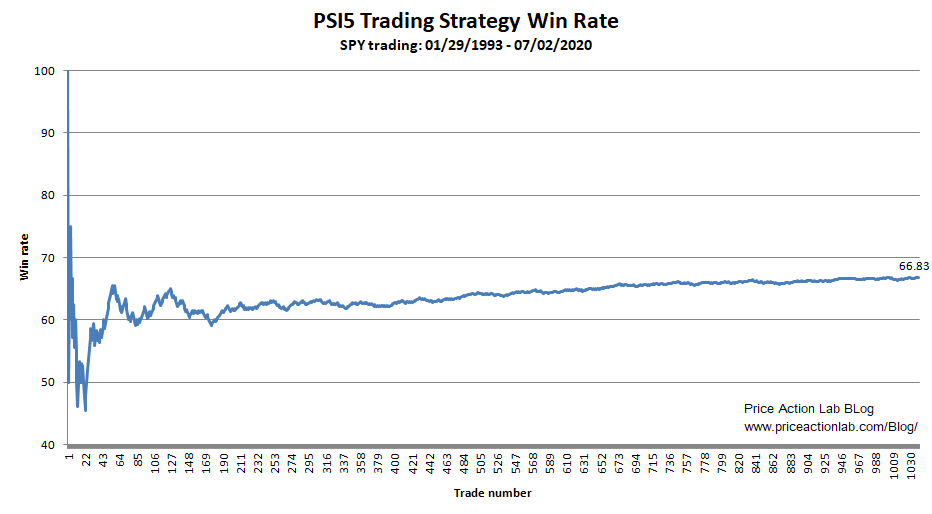The PSI5 mean-reversion strategy in SPY ETF is up 15.79% year-to-date after recovering from the March drawdown.
The PSI5 mean-reversion strategy is not a data-mined but instead based on a formula from a text in probability theory that models price action.
PSI5 strategy in SPY ETF backtest details
Time-frame: Daily (adjusted data)
Strategy type: Long-only
Market: SPY ETF
Backtest period: 01/04/1993 – 08/28/2020
Commission per share: $0.01
Position size: Fully invested
Position entry and exit: Open of next bar
. Below is a graph of win rate as a function of trade number from 01/29/1993 to 07/02/2020:
The win rate of mean-reversion strategies is an important t metric because usually the payoff ratio is smaller than 1, as opposed to momentum strategies where the payoff is much higher than 1 and lower win rate can be tolerated. The win rate of PSI5 strategy in SPY has been steadily rising after initial stabilization by a sample of about 400 trades and is about 67% as of August 28, 2020.
A few comments about mean-reversion strategies
Mean-reversion strategies are risky because by design the signals go against the short-term trend. Stop-loss usually destroys profitability and cannot be used.
Mean-reversion strategies are for professional traders that understand risk and can manage it well.
Amateur traders can lose money even when using a profitable mean-reversion strategy because of fear to take signals that go against the short-term trend.
Usually, professionals allocate a small percentage of capital to mean-reversion strategies.
Charting and backtesting program: Amibroker
Data provider: Norgate Data
More information about PSI strategy:
PSI mean reversion strategy information.
If you found this article interesting, you may follow this blog via RSS or Email, or on Twitter







